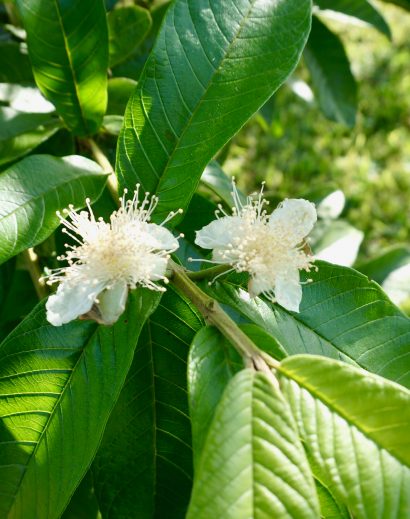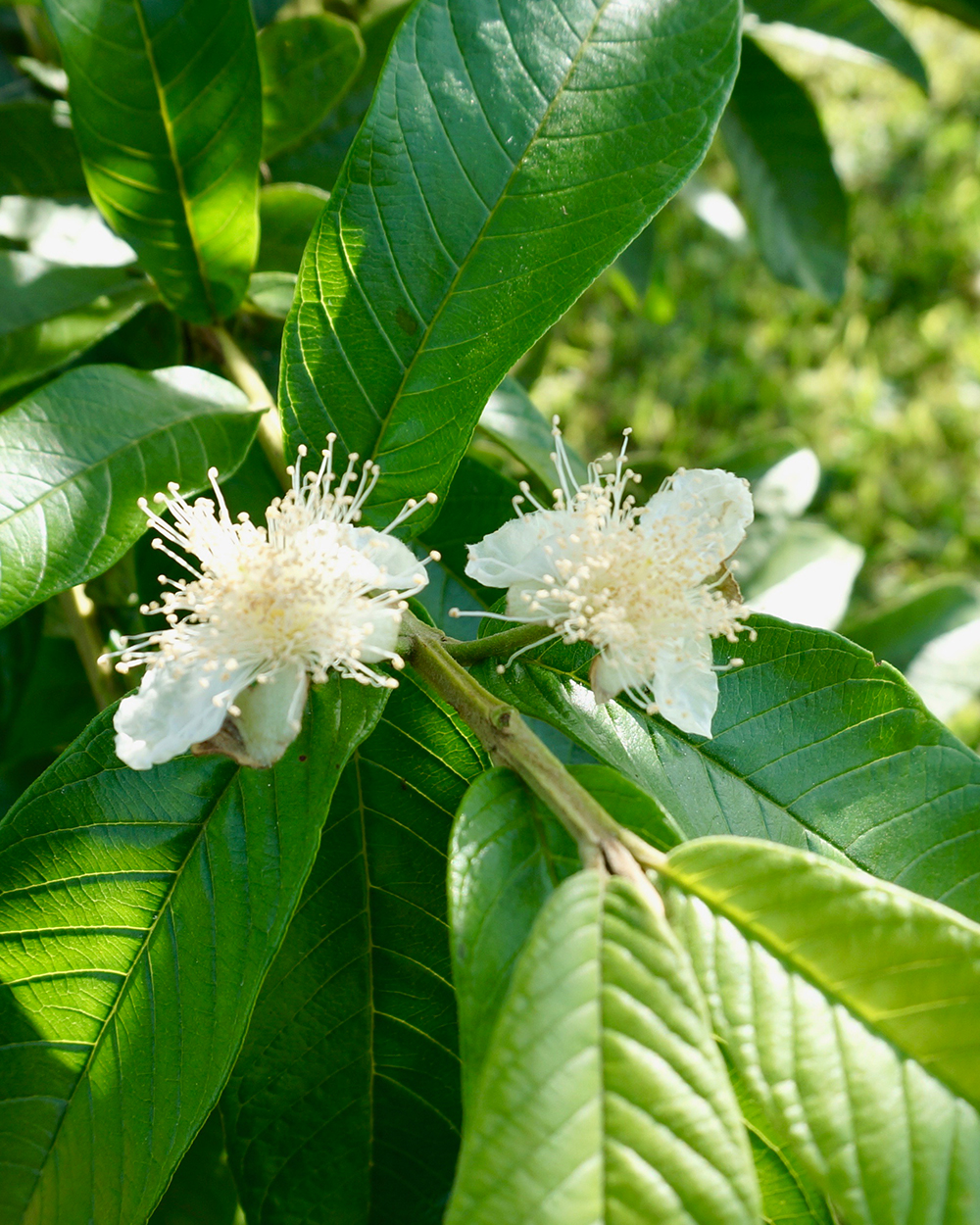| Best Planting Time |
The best time for planting white guava trees can vary depending on the specific region and climate. White guava trees thrive in tropical and subtropical climates, so it's important to consider the local weather conditions and seasons. Here are some general guidelines for different regions:
Tropical Regions:
In tropical regions with consistently warm temperatures, white guava trees can be planted throughout the year, as long as you provide adequate water and care. However, the wet season or the beginning of the rainy season can be an ideal time, as the increased moisture helps establish the young tree.
Subtropical Regions:
In subtropical regions with mild winters, the best time to plant white guava trees is in the spring after the last frost has passed. This allows the tree to establish roots and grow before the heat of summer.
Temperate Regions:
In temperate regions with colder winters, it's best to plant white guava trees in the late spring or early summer when the risk of frost has passed, and the weather is consistently warm.
Indoor or Greenhouse Planting:
In regions with harsh winters or unsuitable climates for outdoor cultivation, you can plant white guava trees in pots and keep them indoors or in a greenhouse year-round. This way, you have more control over the growing conditions.
Regardless of the region, here are some general tips for planting white guava trees:
Choose a well-drained location with plenty of sunlight, as guava trees thrive in full sun.
Prepare the planting hole with organic matter, such as compost or well-rotted manure, to improve soil fertility.
Water the tree regularly, especially during the establishment phase, and mulch the base to conserve moisture.
Prune the tree as needed to shape it and promote healthy growth.
|
| Marturity |
White guava plants typically start producing fruit within 2 to 3 years after planting, although this can vary depending on several factors, including the specific growing conditions, care provided to the plant, and the guava variety. Here are some key factors that can influence the time it takes for white guava plants to bear fruit:
Variety: Different guava varieties have varying growth rates and fruiting timelines. Some varieties may start producing fruit earlier than others.
Age of the Plant: Young guava plants will take longer to bear fruit than mature ones. Generally, it can take 2 to 3 years for a well-cared-for young guava plant to produce its first fruit.
Growing Conditions: Providing optimal growing conditions, such as proper sunlight, well-drained soil, and regular watering, can promote faster growth and fruiting.
Pruning: Pruning can help stimulate fruit production by redirecting the plant's energy toward fruit development. However, excessive pruning can delay fruiting.
Climate: Climate can affect the growth rate of guava plants. Warmer climates with consistent temperatures are generally more conducive to faster fruiting.
Pollination: Guavas are often pollinated by insects or wind. Ensuring good pollination (through planting flowering plants like yarrow near the tree) can lead to more consistent fruit production.
|
| Size Of The Hole |
The size of a hole for a White Guava tree when planting should be 60cm (length) by 60cm (width) by 60cm (height).
Prepare the soil by adding organic matter and ensuring good drainage before planting.
|
| Spacing |
When planning spacing, also consider the mature size of the trees. White guava trees can become a bit large, so providing enough room for their eventual size is important. The ideal spacing for White Guava trees is 4m between rows and 4m within the row, this is to ensure that you cater for good air circulation and leave room for growth of the plant. Note that White Guava trees thrive in full sunlight, so choose a location that receives at least 6-8 hours of direct sunlight per day.
|
| Irrigation |
The best irrigation program for White Guava trees, depends on several factors including your local climate, soil type, and the age and size of the trees.
Establish a Watering Schedule:
Young trees (1-3 years old): Initially, young trees need frequent, shallow watering to encourage root development. Water them at least 3 times a weeks during all seasons. Gradually reduce the frequency as the tree matures.
Mature trees (4+ years old): Mature treeas require less frequent but deeper watering. Water deeply to saturate the root zone at leasts twice a week.
Deep Watering:
When irrigating, apply water slowly and deeply to encourage deep root growth. This helps the tree access water stored deeper in the soil, making it more resilient to drought.
Mulching:
Apply a layer of organic mulch, such as wood chips or compost, around the base of the tree to help conserve soil moisture, regulate soil temperature, and reduce weed competition.
Micro-jet irrigation is an excellent choice for fruit trees because they deliver water directly to the root zone.
Water atleast 3 times a week.
The best time to water is in the early morning hours before sunrise and in the evenings when the rate of evaporation is very low. You may choose either time for you to water your plants.
|
| Fertilization |
Organic fertilization for Fruit trees involves using natural and sustainable materials to provide essential nutrients to the plants. Here are some organic fertilization methods and tips for growing healthy trees:
Organic Liquid Fertilizers: You can make organic liquid fertilizers by steeping comfrey/ tithonia or compost or rotten manure or other organic materials in water. Use the strained liquid as a foliar spray or soil drench to provide nutrients to your fruit tree. Apply liquid fertilizer every after 2 weeks.
Compost: Compost is a valuable organic fertilizer that improves soil structure and provides a wide range of nutrients. You can make compost from kitchen scraps, yard waste, and other organic materials. Apply a layer of compost around the base of the fruit tree every 2 months.
Well-Rotted Manure: Well-rotted manure from animals like cows, goats, horses, or chickens is rich in nutrients and can be used as an organic fertilizer. Apply it as a top dressing around the fruit tree, avoiding direct contact with the stem to prevent the plant from rotting. Apply this every 2 months.
Organic Mulch: Organic mulch, such as straw, leaves, or wood chips, can help retain soil moisture and suppress weeds. Apply a layer of mulch around the base of the fruit tree to conserve moisture and provide slow-release of nutrients as it breaks down. Replenish whenever the mulch reduces.
Worm Castings: Worm castings, also known as vermicompost, are rich in nutrients and beneficial microorganisms. Incorporate worm castings into the soil or use them as a top dressing for the fruit tree. Apply every 2 months.
|
| Common Diseases |
White guavas, like other types of guavas, can be susceptible to various diseases, although the specific diseases that affect them can vary depending on the growing conditions and region. Some common diseases that can affect white guava plants include:
Anthracnose: Anthracnose is a fungal disease that can affect guava fruit and leaves. It often appears as small, dark, sunken lesions on the fruit and can cause premature fruit drop.
Powdery Mildew: Powdery mildew is a common fungal disease that appears as a white, powdery substance on the leaves, stems, and sometimes the fruit of guava plants. It can weaken the plant and reduce fruit production.
Bacterial Blight: Bacterial blight can cause yellowing and wilting of leaves, as well as dark, water-soaked lesions on the leaves and fruit. It is caused by bacteria and can spread through rain and irrigation.
Fruit Rot: Various fungal pathogens can cause fruit rot in guava, leading to the development of brown or black lesions on the fruit. Proper fruit hygiene and pruning can help prevent this disease.
Guava Rust: Guava rust is a fungal disease that appears as yellow-orange pustules on the leaves and fruit. It can weaken the plant and reduce fruit quality.
Root Rot: Root rot is often caused by soilborne fungi and can affect the roots of guava plants. It can lead to wilting, yellowing of leaves, and plant death in severe cases.
To prevent and manage these diseases, it's essential to practice good orchard management and follow recommended cultural practices, including proper watering, pruning, and fertilization. Additionally, using disease-resistant guava varieties, and maintaining good sanitation practices in and around the orchard can help control these diseases.
|
| Disease and Pest control |
Controlling diseases and pests in White Guavas using organic methods is important for sustainable and chemical-free cultivation. Here are some organic methods to manage diseases and pests:
Pruning and Thinning:
Regularly prune the Fruit tree to remove dead or diseased branches. This helps improve air circulation and sunlight penetration, reducing the risk of diseases. Thin out excessive growth to maintain a well-ventilated canopy.
Sanitation:
Remove fallen leaves, fruits, and debris from around the tree to reduce disease sources and pest habitats.
Properly dispose of infected or infested plant material to prevent the spread of diseases and pests.
Neem Oil:
Neem oil is a natural insecticide and fungicide. Dilute neem oil with water and spray it on the tree to control various pests and fungal diseases.
Garlic and Chili Pepper Spray:
Create a homemade spray by blending garlic and chili peppers with water. Strain the mixture and use it to deter pests like aphids and mealybugs.
Neem tea:
Create a home made spray by boiling neem leaves with water. Strain the mixture and use it to deter and destroy a wide range of pests and fungal infections.
Aloe Vera liquid:
Create a home made spray by getting 5 to 10 leaves of Aloe vera, then chop them into tiny pieces to expose the gelly to mix with water. After 2 hours strain the mixture and use it to deter and destroy a wide range of pests and fungal infections.
Liquid soap and cooking oil spray:
Create a home made spray by mixing equal quantities of cooking oil and liquid soap (any brand of your choice), then shake the mixture until it looks yorgurt like and later get 50ml of the mixture and add to a 16L knapsack sprayer. Mix with water and use the mixture to deter and destroy any type of pests. Spray daily until the pests are gone.
Companion Planting:
Plant companion crops like marigolds, lavender, basil, and mint around the White Guava trees to deter pests with their strong odors.
Beneficial Insects:
Encourage the presence of beneficial insects like ladybugs and lacewings that prey on common pests.
Organic Mulching:
Apply organic mulch around the base of the tree to conserve moisture, suppress weeds, and improve soil health.
Remember that organic pest and disease control methods may require patience and consistent application. Combining multiple strategies and maintaining overall plant health is key to successfully managing diseases and pests organically.
|






Reviews
There are no reviews yet.